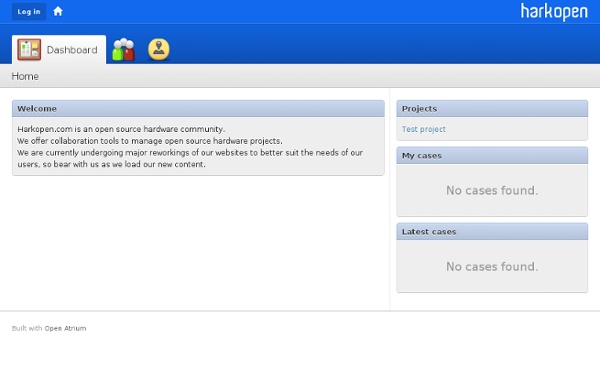



Hardware Hackers Create a Modular Motherboard | Gadget Lab An ambitious group of hardware hackers have taken the fundamental building blocks of computing and turned them inside out in an attempt to make PCs significantly more efficient. The group has created a motherboard prototype that uses separate modules, each of which has its own processor, memory and storage. Each square cell in this design serves as a mini-motherboard and network node; the cells can allocate power and decide to accept or reject incoming transmissions and programs independently. Together, they form a networked cluster with significantly greater power than the individual modules. The design, called the Illuminato X Machina, is vastly different from the separate processor,memory and storage components that govern computers today. “We are taking everything that goes into motherboard now and chopping it up,” says David Ackley, associate professor of computer science at the University of New Mexico and one of the contributors to the project. Norair agrees.
Hobby Engineering Home Page RepRap RepRap is humanity's first general-purpose self-replicating manufacturing machine. RepRap takes the form of a free desktop 3D printer capable of printing plastic objects. Since many parts of RepRap are made from plastic and RepRap prints those parts, RepRap self-replicates by making a kit of itself - a kit that anyone can assemble given time and materials. RepRap is about making self-replicating machines, and making them freely available for the benefit of everyone. Reprap.org is a community project, which means you are welcome to edit most pages on this site, or better yet, create new pages of your own. RepRap was the first of the low-cost 3D printers, and the RepRap Project started the open-source 3D printer revolution. RepRap was voted the most significant 3D-printed object in 2017. RepRap state-of-the-art when this page was last updated (June 2017) is well represented by the RepRap Snappy, RepRap Dollo and the RepRap Generation 7 Electronics.
Welcome Linux Fund: OGD1 Available for Grant Application and Purchase! The Open Graphics Device v1 is an open hardware prototyping platform based on a fully programmable FPGA semiconductor. The OGD1 features dual DVI-I outputs and 100-pin IDC connector for exceptional video and I/O flexibility. The Open Graphics Project designed and maintains the OGD1, and all of its schematics are available under an open source license. Linux Fund has build twenty-five OGD1's, ten of which will be given to developers who are committed to advancing the platform and twelve of which will be sold to cover the manufacturing costs. Developers: How to apply to receive an OGD1 The goal of this developer program is two-fold: To guarantee solid open source operating system driver support and to stimulate innovative uses of this unique computing platform. Interested developers are invited to write ogd1@linuxfund.org with a description of their background, technical qualifications and how they would use an OGD1. Limit one per customer.
Cheap Arduino Wireless Communications I was looking for a way to handle wireless communications between two Arduino boards. Other options like Xbee or Bluetooth were going to cost $50 to over $100. Then I found a cheap RF transmitter and receiver at Sparkfun. The total cost is only $9! Here are a few limitations to RF solution: Communications is only one way. The advantages are that it is cheap and it is pretty easy to use. Below are some images showing how I hooked up the receiver and transmitter to two different Arduino boards. Here’s a picture of the my actual bread boarded circuit. Since the receiver is constantly picking up random noise I add a few extra bytes to every data packet. I broke the Arduino code into two files. I did all of my initial testing without any of these improvement and everything worked fine with these devices inside the same room. Add an antenna. I got a lot of help from the transmitter/receiver data sheets, and from this article. I’ll mention an even cheaper idea I had while doing this. Permalink
Embedded board manufacturers and dealers Difficult to choose between manufacturers of embedded system boards supporting Linux and other Free Software operating systems? There are so many of them now… To help you find the best hardware solution for your system, we are keeping a list of suppliers making attractive products. Here are the conditions to be on the list: Offer attractive and competitive productsAt least one products supported (at least partially) in the official versions of Free Software operating systems (Linux, eCos, NetBSD…). This is a rather strong requirement, but only such products bring a guarantee for long term community support, making it much easier to develop and maintain embedded systems. Companies and organizations are listed by alphabetical order, mentioning the country where their headquarters are. Organizations Contributing to this page Don’t hesitate to contact us to let us know about other suppliers, or to report websites which still are on our list but no longer match our criteria.
The World Famous Index of Arduino & Freeduino Knowledge